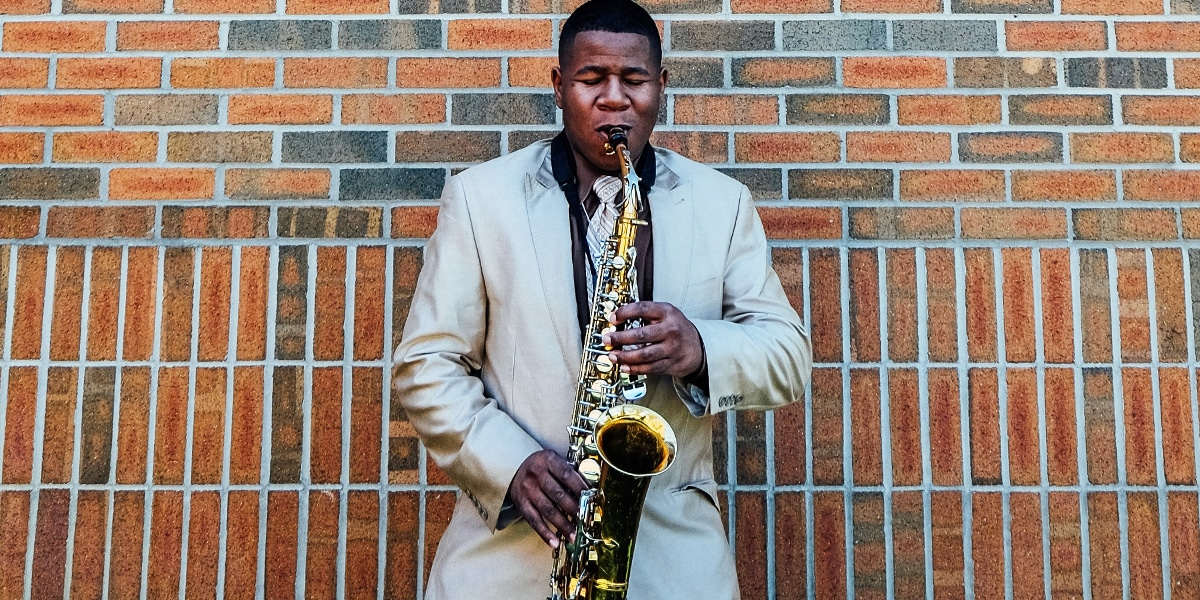The Mysteries of Light seem to be not only a most fitting development of the rosary, but also a providential one for our age and one that is likely to stand the test of time.
According to one tradition, the rosary’s defining moment came during an apparition of Mary to Saint Dominic around the year 1221. Dominic was combating a popular heresy in France called Albigensianism. Mary gave him the rosary, told him to teach people this devotion, and promised that his apostolic efforts would be blessed with much success if he did. We know the religious order Dominic founded (the Dominicans) clearly played a major role in promoting the rosary throughout the world in the early years of this devotion.
The Poor Man’s Breviary
Another important development in the history of the rosary is found in its roots in the liturgical prayer of the Church. In the medieval period, there was a desire to give the laity a form of common prayer similar to that of the monasteries. Monastic prayer was structured around the Psalter—the recitation of all 150 psalms from the Bible. At that time, however, most laity could not afford a Psalter, and most could not even read.
As a parallel to the monastic reading of the 150 psalms, the practice developed among the laity of praying the Our Father 150 times throughout the day. is devotion came to be known as “the poor man’s breviary.” e laity eventually were given beads to help them count their prayers.
Marian devotion followed a similar pattern. Gabriel’s words, “Hail Mary, full of grace, the Lord is with you” (Luke 1:28), sometimes were read in the monasteries at the end of a psalm, showing how the psalms found fulfillment in the New Testament with the coming of Christ through the Virgin Mary. Some laity began to recite these words in the manner of the Our Father—150 times, while counting their prayers on beads. In repeating the words of Gabriel, they were reliving the joy of the annunciation and celebrating the mystery of God becoming man in Mary’s womb.

Christians linked this prayer with Elizabeth’s words to Mary at the Visitation: “Blessed are you among women, and blessed is the fruit of your womb” (Luke 1:42). Finally, with the addition of the name “Jesus” in the thirteenth century, the first half of the Hail Mary was in place. is early form of the Hail Mary was recited 150 times on the beads. By the fifteenth century, the 150 Hail Marys had been divided into sets of ten, known as “decades,” with an Our Father at the beginning of each.
Meditating on Mysteries
Another line of development in monastic prayer eventually led to the practice of contemplating Christ’s life while reciting the Hail Marys. Some monasteries began associating the psalms with an aspect of Jesus’s life. At the end of each psalm, the monks would recite a phrase relating that psalm to the life of Jesus or Mary. Taken together, these phrases formed a brief life of Christ and his mother.
A devotion that joined fifty of these phrases with the praying of fifty Hail Marys began in the early fifteenth century. However, since fifty points of reflection generally could not be recalled without a book, the devotion was simplified by reducing the meditation points to fifteen, with one for every decade. us, by the end of the fifteenth century, the basic structure of the rosary was in place: Our Fathers dividing decades of Hail Marys, with meditations on the life of Christ and Mary.
In the sixteenth century, the sets of five Joyful, five Sorrowful, and five Glorious Mysteries as we know them today began to emerge. Also, the vocal prayers of the rosary were finalized. The Glory Be was added to the end of every decade, and the second half of the Hail Mary was formalized: “Holy Mary, Mother of God, pray for us sinners now and at the hour of our death. Amen.” In 1569, Pope Saint Pius V officially approved the rosary in this form: fifteen decades of Hail Marys introduced by the Our Father and concluded with the Glory Be.
And so the rosary remained for over four centuries. Then, in 2002, Pope Saint John Paul II proposed something new.
The Luminous Mysteries
You know you are living in a historic moment when USA Today is teaching people how to pray the rosary. Its October 17, 2002, edition featured an article that included a typical USA Today visual aid graphic with very atypical content: a diagram of the rosary.
The graphic offered clear instructions on how to pray the rosary, explaining which prayer—Our Father, Hail Mary, or Glory Be—should be recited with which bead. While one might expect to find such a picture and explanation in pamphlets in the back of a church, it was surprising to find it in the pages of the secular press and, no less, in one of our nation’s most widely read newspapers.
What was the impulse for such catechetical instruction in this most unusual of settings?
The day before the article’s publication, Pope John Paul II published his Apostolic Letter on the Most Holy Rosary, Rosarium Virginis Mariae. The letter announced the Year of the Rosary and called on Catholics to renew their devotion to this traditional prayer. However, what grabbed the attention of USA Today and the entire Catholic world was John Paul II’s proposal of a whole new set of mysteries for contemplation in the rosary, the “Mysteries of Light” or “Luminous Mysteries.”
John Paul II suggested that reflection on the mysteries of Christ’s public ministry would help Catholics enter more fully into the life of Jesus through the rosary: “To bring out fully the Christological depth of the Rosary it would be suitable to make an addition to the traditional pattern which…could broaden it to include the mysteries of Christ’s public ministry between his Baptism and his passion” (RVM, 19). The pope proposed the following scenes to be contemplated: (1) Christ’s baptism, (2) the wedding feast at Cana, (3) the proclamation of the kingdom, (4) the Transfiguration, and (5) the institution of the Eucharist.
The pope’s invitation to reflect on these mysteries makes a lot of sense. As some have noted, in the traditional form of the rosary, the transition from the fifth Joyful Mystery to the first Sorrowful Mystery seemed rather abrupt. We moved from Jesus as a twelve-year-old boy found by his parents in the temple to Jesus as a 33-year-old man about to be crucified on Calvary. The Mysteries of Light fill in the gap.
The pope also said he hoped the addition of new mysteries would give the rosary “fresh life” at a time when the rosary was devalued in many parts of the Church. He hoped this new vitality would help “enkindle renewed interest in the Rosary’s place within Christian spirituality as a true doorway to the depths of the Heart of Christ, ocean of joy and of light, of suffering and of glory” (RVM, 19). Indeed, the Mysteries of Light seem to be not only a most fitting development of the rosary, but also a providential one for our age and one that is likely to stand the test of time.









7 thoughts on “The Origins of the Rosary”
I’m finding many references to beginnings and use of the Rosary, but nothing about the original physical one . Are there any theories as to what came of it?
Thanks,
Joe
Read Fr. Donal Calloway’s , Champion’s of the Rosary. He gives a very thorough history. His book is recent. The rudimentary Rosary dates back to early monastics, who prayed the 150 psalms and those who could not read prayed 150 our Fathers and over time made a string of beads to keep count. Then by inspiration they added the Angelic Salutation, then the Evangelical Salutation of Elizabeth, then by Trent, the second half defending the doctrine of Mary mother of God, Intercessor, “ Holy Mary Mother of God, pray for us sinners…”
I love the Luminous mysteries. They did indeed give a new complimentary light to an old traditional prayer. The rosary is our weapon against temptation, against sin, against all evil-especially during these times. Don’t leave home without one. Don’t go a day without praying it. If you fall or fail keep praying it no matter what. Most of all pass on this devotion to others as ir helos save souls!
I love the Rosary
I do the Scriptural Rosary daily…the words of scripture for each bead of each decade have opened my heart, mind, and soul beyond what I could have ever contemplated. I grew up Catholic but left when I went to college, married a man who became a Bible loving Methodist minister. I learned to love Scripture but felt a yearning for what my soul had felt at Mass. So, after 50 years away, and with the blessing of my Methodist husband, I returned to The Church…when I participated in saying the Rosary public ally, I would leak tears. Why? To find out I began saying it privately using my phone to teach me. I quickly found the Scriptural Rosary for which I am, literally, eternally grateful!
The idea of prayer beads originated with the Muslims in the early years after the prophet died. In fact Fatima the daughter of a Caliph made it a common practice almost a thousand years before Dominic’s institution of it for Catholics, St Francis admired the Muslims for there pious practice of praying on beads before Dominic’s devotion to the rosary.
Not true. The prayer bead and psalm prayers predate islam by centuries. Moreover, a thousand year before Saint Dominic as you mentioned, means in the year 150-250 A.D. That’s way before the emergence of islam in arabia, which was in the 7th century.